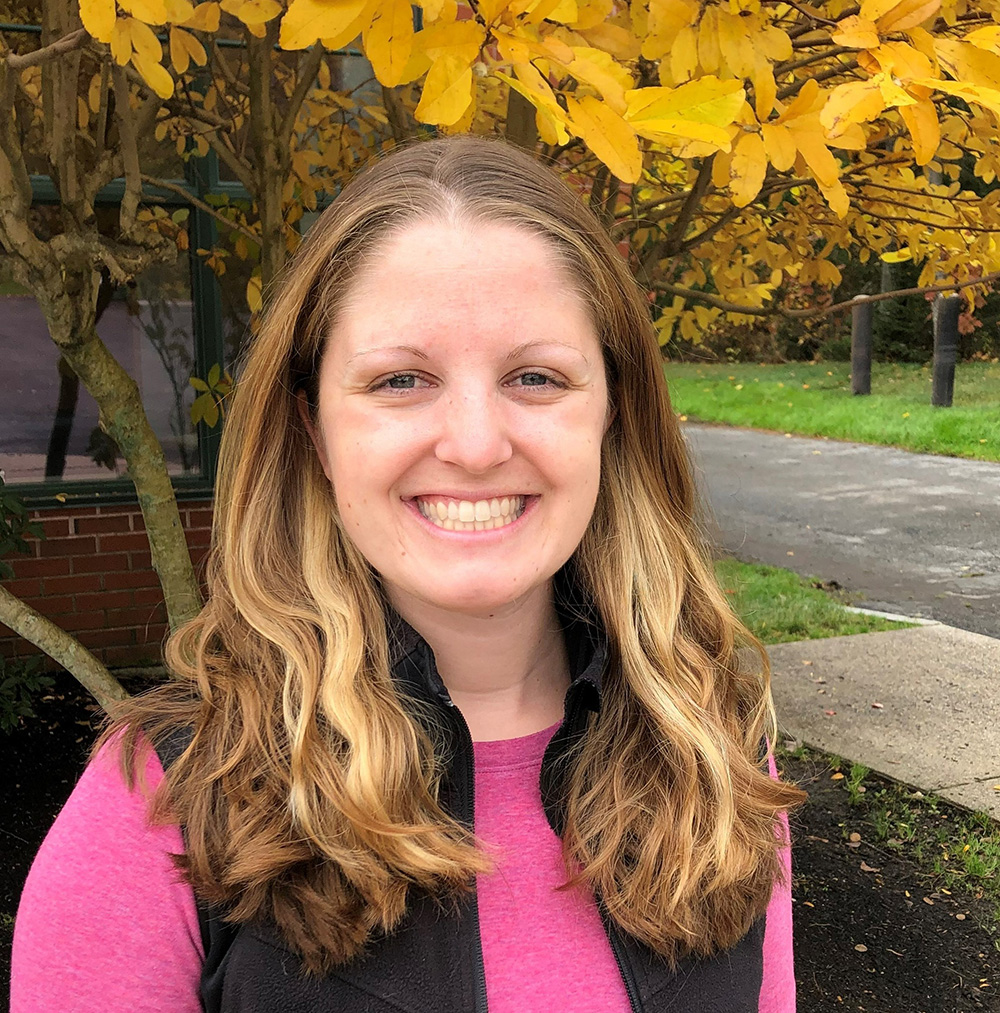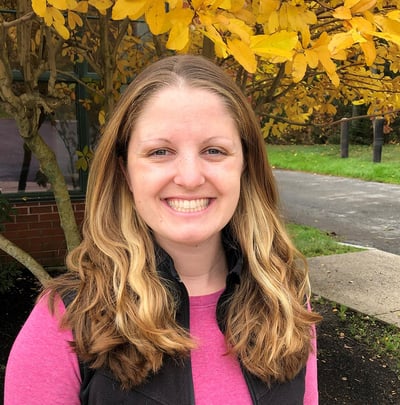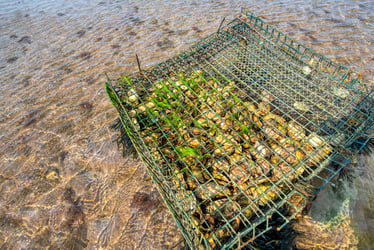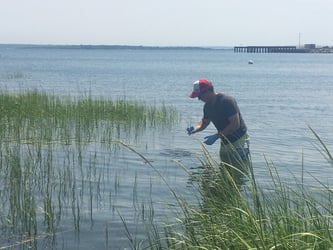In March we attended the National Shellfisheries Association (NSA) meeting in Baltimore, Maryland. This annual meeting brings together scientists and managing officers in the shellfish industry to discuss trends, collaborate, and share research. Located right on Baltimore's scenic and bustling Inner Harbor, the meeting provided an opportunity to observe local marine life in action.
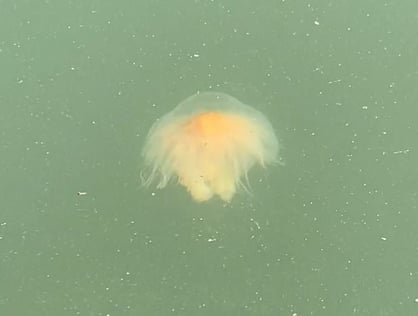 At this time of year, Lion's mane jellyfish (Cyanea capillata) are abundant in the Chesapeake Bay. According to Dr. Josh Stone of the University of South Carolina, Lion's mane jellyfish are the dominant Scyphozoan during the winter months. Scyphozoans are members of a taxonomic class that consists of the "true jellyfishes". They are often visible to humans as they tend to spend time near the water's surface, however, they have also been shown to migrate vertically in the water column over long time periods1.
At this time of year, Lion's mane jellyfish (Cyanea capillata) are abundant in the Chesapeake Bay. According to Dr. Josh Stone of the University of South Carolina, Lion's mane jellyfish are the dominant Scyphozoan during the winter months. Scyphozoans are members of a taxonomic class that consists of the "true jellyfishes". They are often visible to humans as they tend to spend time near the water's surface, however, they have also been shown to migrate vertically in the water column over long time periods1.
These predators are an important part of the trophic web. They graze on small shellfish, other jellies, fish larvae and eggs, as well as zooplankton, including copepods.
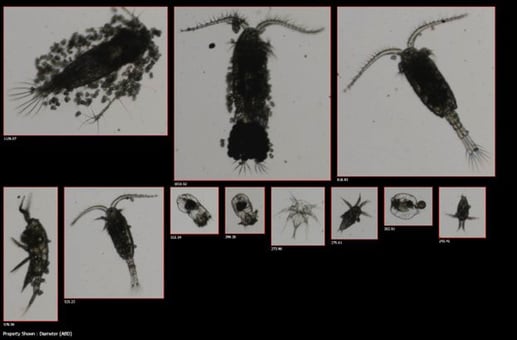
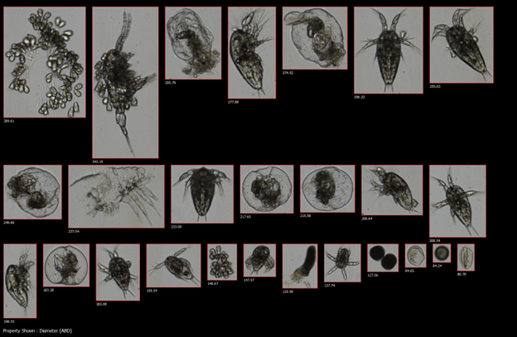
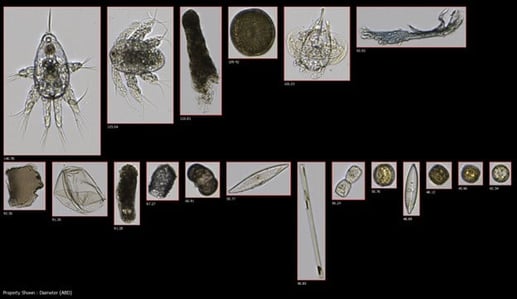 Knowing their dietary habits, it was no surprise that locally-collected water samples showed an abundance of adult and larval copepods when run on FlowCam.
Knowing their dietary habits, it was no surprise that locally-collected water samples showed an abundance of adult and larval copepods when run on FlowCam.
Pictured top right: (Top row) Adult copepods captured using FlowCam 8100 (2X objective).
Many of the adults, like the first two pictured above, were covered by Vorticella spp., a type of ciliate that forms stalks and can attach to copepods in colonies2. Vorticella is not harmful to the copepods, as it feeds on bacteria and small algae.
By increasing the magnification from 2X to 4X, you can see individual stalks of Vorticella sp. Notably, FlowCam was able to detect and measure translucent structures as well. Thank you to Shawna Chamberlin from Roger Williams University for identifying Vorticella in the samples!
Pictured middle right: More copepods and other plankton species captured using FlowCam 8100 (4X objective). Vorticella spp. is visible in the first two images in the top row, as well as the 5th image from the left in the bottom row.
By increasing the magnification to 10X, you can see even more details on the copepod larvae (top row, first two images), as well as copepod fecal matter (top row, third image). At this magnification, you can also observe diatoms, tintinnids, pollen grains, and what may be a blue polyester fiber (top row, last picture).
Pictured bottom right: Organisms and particles captured using FlowCam 8100 (10X objective).
This ability to increase magnification in order to gain further insight demonstrates the advantage of using multiple objectives with FlowCam. FlowCam 8000 and FlowCam Cyano instruments allow users to easily switch between 2X, 4X, 10X, and 20X objectives.
FlowCam data, like the images above, has many benefits for shellfish managers. The instrument can be used for harmful algal bloom (HAB) monitoring, allowing operators to notice an uptick in harmful algae concentrations and implement a mitigation strategy before a bloom develops. Live or preserved samples can be analyzed in less than 10 minutes, providing immediate feedback to the operator. FlowCam also enables evaluation of the productivity and plankton availability for shellfish food supply when performing site evaluations.
 FlowCam can be used in shellfish hatcheries to keep track of the health of the larvae simply by looking at high-resolution images (like these images of shellfish larvae) to quickly assess shell abnormalities. In addition, hatchery managers can monitor the concentration of the algae being fed to the larvae and detect potential contaminants.
FlowCam can be used in shellfish hatcheries to keep track of the health of the larvae simply by looking at high-resolution images (like these images of shellfish larvae) to quickly assess shell abnormalities. In addition, hatchery managers can monitor the concentration of the algae being fed to the larvae and detect potential contaminants.
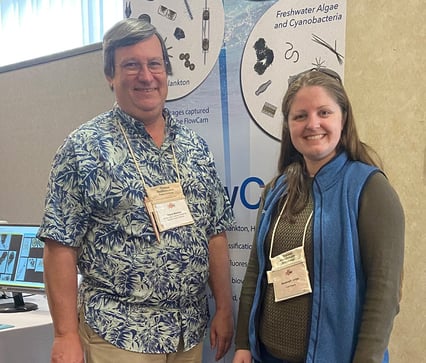 The NSA meeting provided an excellent opportunity to learn more about potential FlowCam applications in the shellfish industry, including those mentioned above, as well as to catch up with friends from up and down the East Coast. The meeting attracted attendees from as far away as Prince Edward Island in Canada, the west coast of the US, and even Hong Kong. Here I am (Savannah Judge, right) with FlowCam user, Dr. Steve Morton of NOAA. Dr. Morton's research centers on microscopic analysis of harmful algae.
The NSA meeting provided an excellent opportunity to learn more about potential FlowCam applications in the shellfish industry, including those mentioned above, as well as to catch up with friends from up and down the East Coast. The meeting attracted attendees from as far away as Prince Edward Island in Canada, the west coast of the US, and even Hong Kong. Here I am (Savannah Judge, right) with FlowCam user, Dr. Steve Morton of NOAA. Dr. Morton's research centers on microscopic analysis of harmful algae.
On Thursday we walked down the road to visit Dr. Allen Place, Taylor Armstrong, and other lab members who use FlowCam at the University of Maryland's Institute of Marine Environmental Technology (IMET). IMET is home to a state-of-the-art aquaculture research center for the study of finfish, shellfish and microalgae.
NSA offered many educational sessions throughout the week on subjects including harmful algae blooms (HABs), softshell clams, and microplastics. All in all, it was a fantastic series of presentations, and a wonderful group of people all coming together with a shared goal and passion.
Thank you to everyone who took the time to visit our booth, as well as to Dr. Sandy Shumway and the other members of the NSA who helped organize this year's meeting. We hope to see you at next year's meeting in Charlotte, North Carolina!
References
- Moriarty, P.E., K.S. Andrews, C.J. Harvey, M. Kawase. 2012. Vertical and horizontal movement patterns of scyphozoan jellyfish in a fjord-like estuary. Mar Ecol Prog Ser. https://www.researchgate.net/publication/235938506_Vertical_and_horizontal_movement_patterns_of_scyphozoan_jellyfish_in_a_fjord-like_estuary
- Bielecka, L. and R. Boehnke. 2014. Epibionts and parasites on crustaceans (Copepoda, Cladocera, Cirripedia larvae) inhabiting the Gulf of Gdańsk (Baltic Sea) in very large numbers. Oceanologia. https://www.sciencedirect.com/science/article/pii/S0078323414500346







